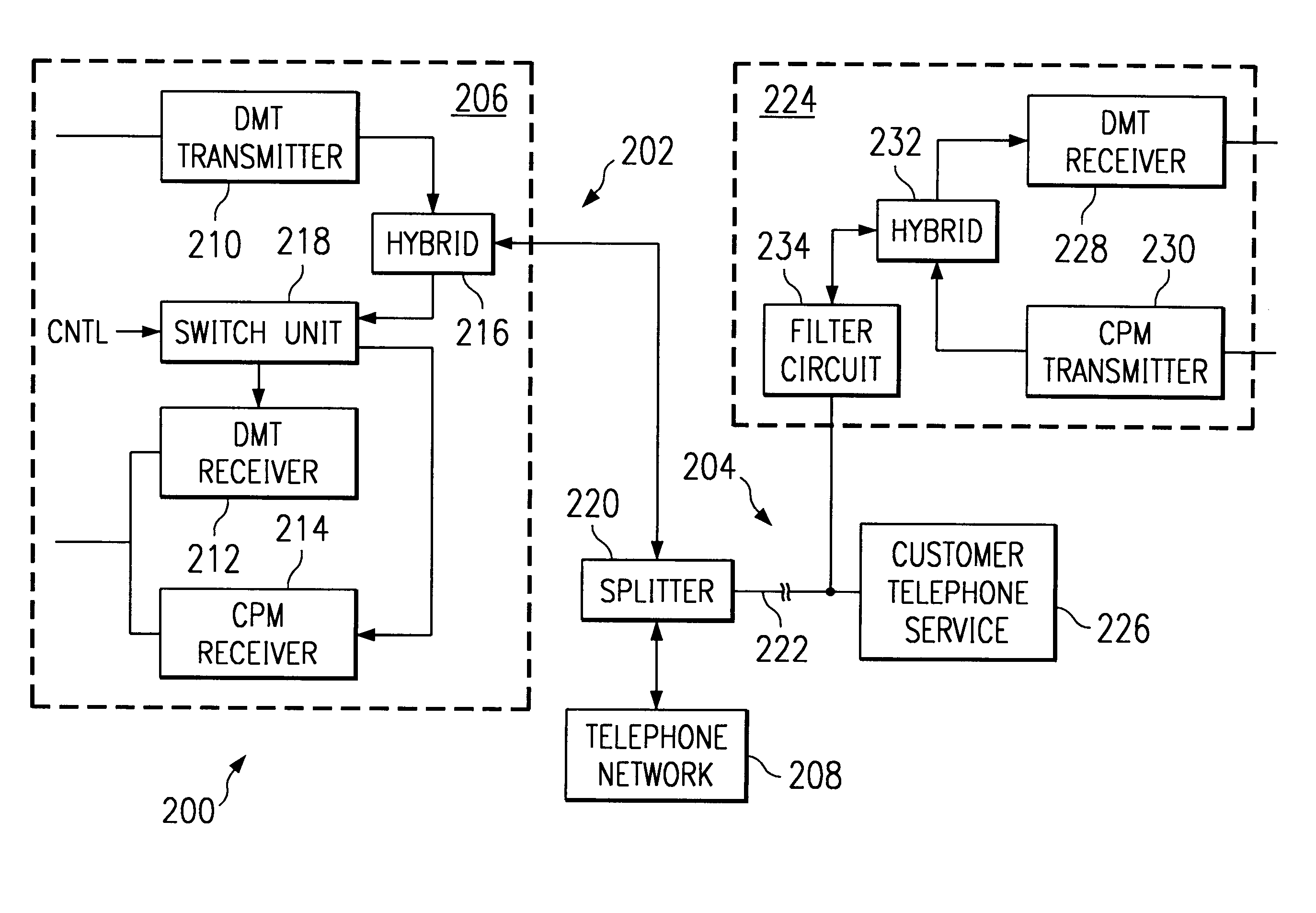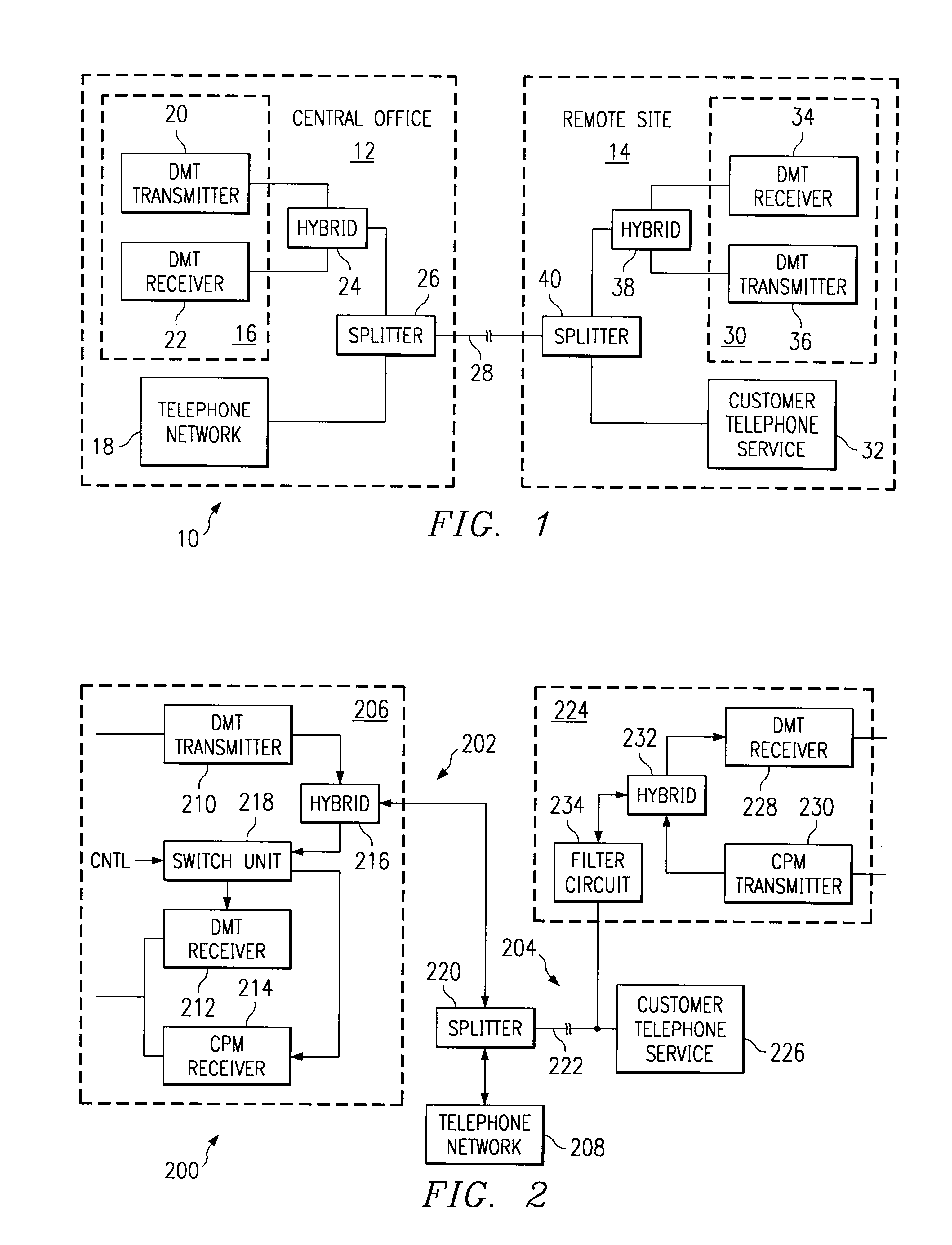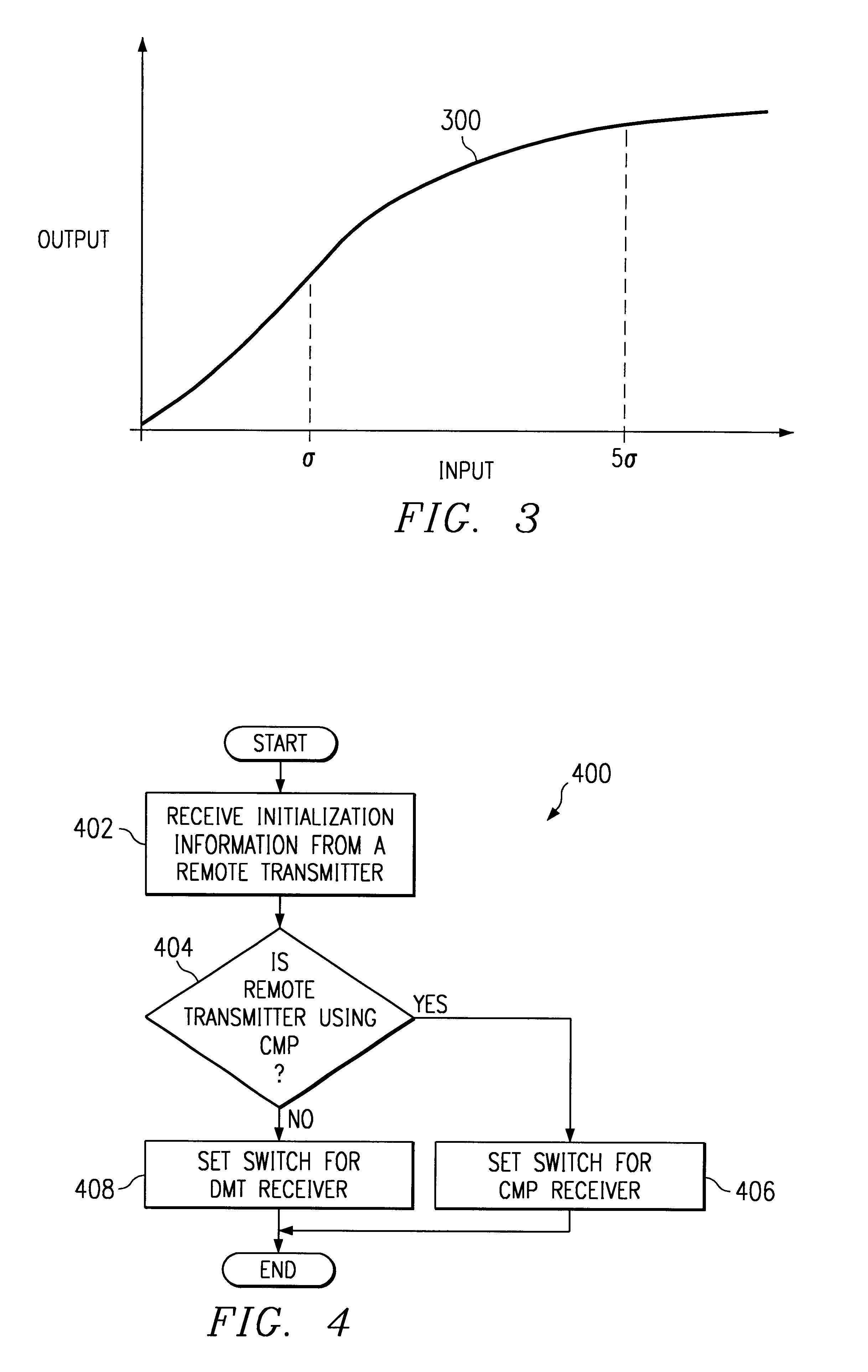Data communications system with splitterless operation
a data communication and operation technology, applied in the field of data communication systems, can solve the problems of high noise level, impede the use of the filter, and inconvenient and burdensome filtering at the customer's premises, and achieve the effect of less noise, less noise, and high performan
- Summary
- Abstract
- Description
- Claims
- Application Information
AI Technical Summary
Benefits of technology
Problems solved by technology
Method used
Image
Examples
Embodiment Construction
The invention relates to a data communication system that provides different types of service to a remote site even when the remote site lacks a splitter. A central site (e.g., central office) is able to communicate with at least two different types of remote sites. One type of remote site includes a full splitter (i.e., both low-pass and high-pass filters), and the other type of remote site has only a partial splitter (i.e., includes high-pass filter but lacks a low-pass filter). Although conventionally the transceivers (e.g., ADSL transceivers) at these remote sites would be of the same design and use the same modulation technique for upstream as for downstream transmissions, here the remote site that lacks a low-pass filter (i.e., partial splitter type remote site) uses a different modulation technique for upstream transmissions. As an example, the remote site without a complete splitter could use continuous phase modulation (CPM) for upstream transmissions and discrete multi-ton...
PUM
 Login to View More
Login to View More Abstract
Description
Claims
Application Information
 Login to View More
Login to View More - R&D
- Intellectual Property
- Life Sciences
- Materials
- Tech Scout
- Unparalleled Data Quality
- Higher Quality Content
- 60% Fewer Hallucinations
Browse by: Latest US Patents, China's latest patents, Technical Efficacy Thesaurus, Application Domain, Technology Topic, Popular Technical Reports.
© 2025 PatSnap. All rights reserved.Legal|Privacy policy|Modern Slavery Act Transparency Statement|Sitemap|About US| Contact US: help@patsnap.com



